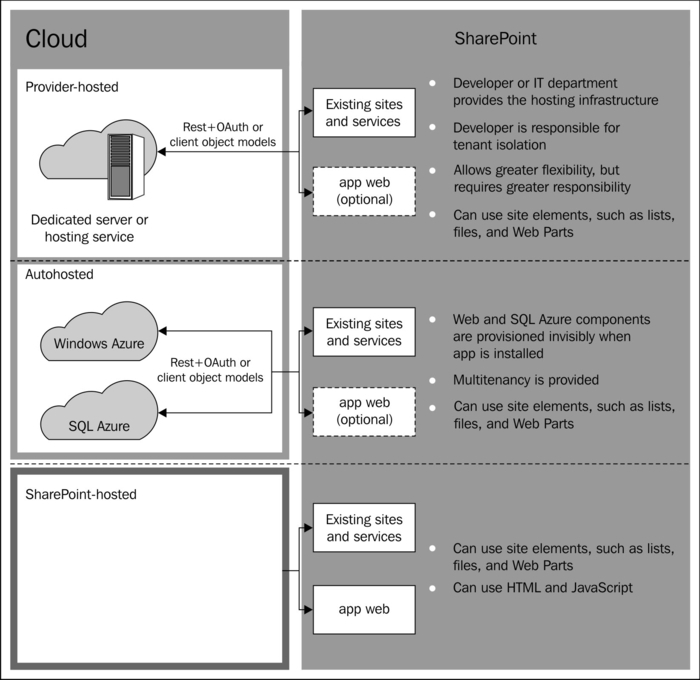Until now, this chapter has concentrated on the farm solution model with which most of the readers are familiar. With SharePoint 2013, Microsoft has introduced the Cloud App Model. There are excellent resources on MSDN and other sites that explain the pros and cons in detail, but it is necessary to understand the fundamental difference and the impact on our Disaster Recovery procedures.
The Cloud App Model essentially requires applications that may be hosted on one of the following three places:
A hosting provider
Auto-hosted using Windows Azure and SQL Azure
SharePoint hosted
This cloud model is illustrated in the following figure:

While the Cloud App Model is clearly needed to support the Microsoft App Store, the real power is realized when building SharePoint applications that can take advantage of Microsoft Azure on-demand computer...



